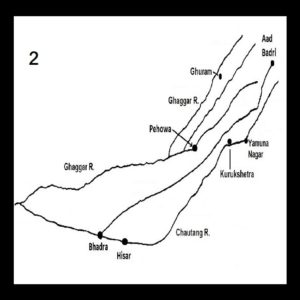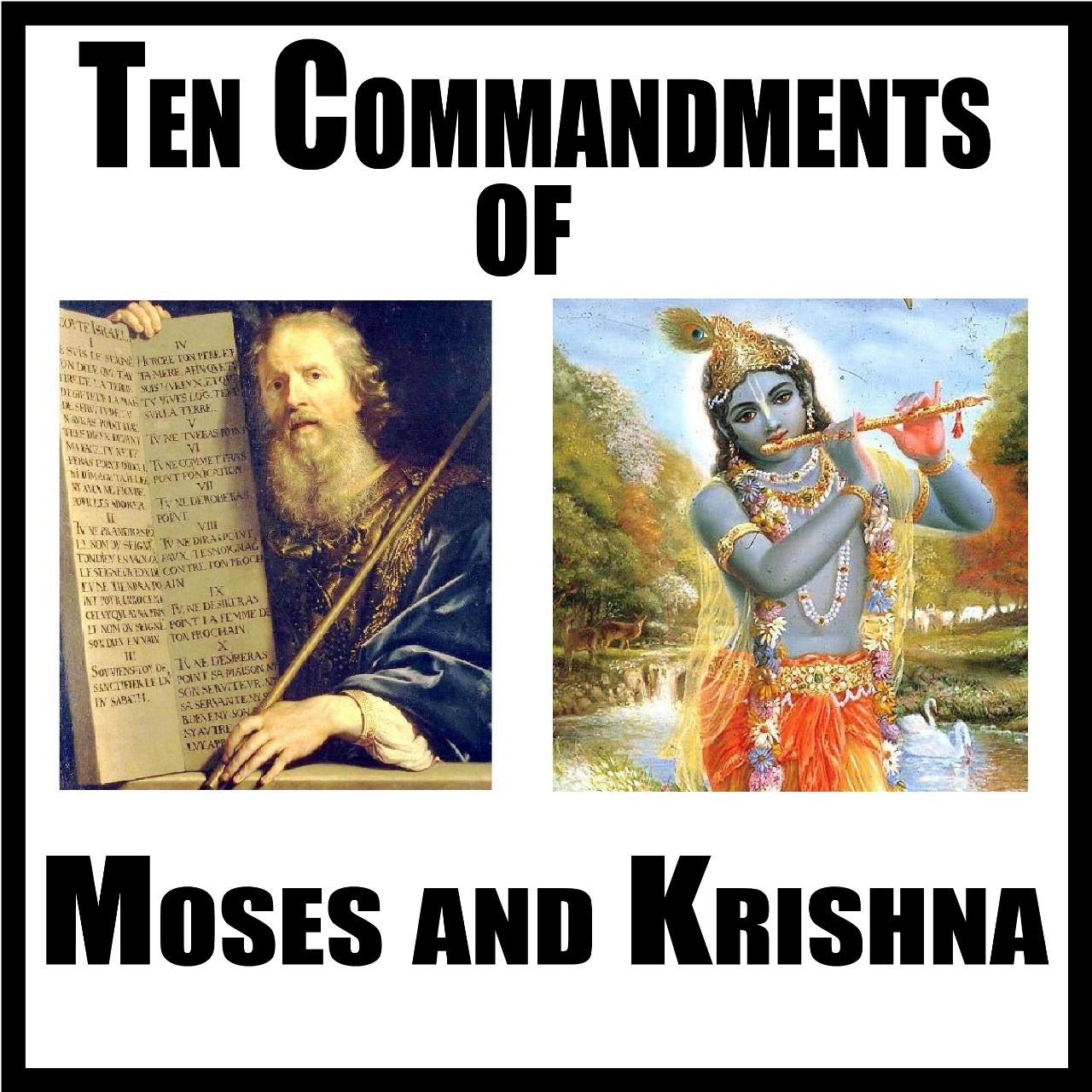Where was Ramas Ayodhya located?
We need to show that Biblical Abraham and Hindu Rama lived at the same place in order to establish the hypothesis that they were the same person. We suggest the Prophet lived at Ghuram in Punjab in India. In this post we show that Rama’s place at Ayodhya…. could indeed be located at Ghuram; and not at Ayodhya as held in the living tradition.
Abraham| Abram| Ai| Rama| Ayodhya
Our study shows that Biblical Abraham and Hindu Rama were the same person who lived in the Indus Valley. Briefly, the name Abraham is modified from Abram which means Ab-ram or Father Rama. The name of the Prophets wife was Sarah or Sita. The Prophet travelled to the south for a period in both traditions. Sarah was taken to the household of the Pharaoh in the South just as Sita was abducted by Ravana, King of the South. The place of the Prophet is named Ai or Ayath in the Biblical tradition while it is named Ayodhya in the Hindu tradition. These similarities suggest they could be the same person.
The Biblical tradition is ambivalent about the location of Ai though most suggestions are in favour of Ur in Southern Iraq. We have dealt with the problems with this suggestion elsewhere. Our suggestion is that Abraham’s Ai was located at a place named Ghuram in the State of Punjab in India.
The dominant living tradition in India holds that Rama’s Ayodhya was located at the Living Ayodhya in Uttar Pradesh in India. In this post we show that Ayodhya was more likely located at Ghuram. If so, then the place of the Prophet in both traditions would be located at Ghuram. That would support the hypothesis that Abraham and Rama were the same person.
There are two claimants for the ancient Ayodhya—the Living Ayodhya in Uttar Pradesh and Ghuram in Patiala District of Punjab.Just as at Ayodhya, there is a living tradition that Mata Kausalya gave birth to Rama at Ghuram.

West-flowing Rivers| Yamuna| Sarayu| Ganga| Bharadwaj| Valmiki| Ramayana| Valdiya
The ancient Ayodhya was located on the banks of the Sarayu River, which was a tributary of the Ganga River.Rama, Lakshmana and Sitareached the Ashram of Sage Bhardwaj during their exile. The Sage told them: “You two brothers go near the Yamuna at the confluence of Ganga and Yamuna. The Ganga has joined the Yamuna with a westward flow here.” (Valmiki Ramayana, Ayodhya Kanda 55:4).This means that the Ganga and Yamuna Rivers flowed in a western direction at the time of Rama.
Archaeological evidence indicates that the Yamuna was flowing westward before 1500 BCE. K S Valdiya, says that the Yamuna was flowing westward till about 1800 BCE (Valdiya, K S, “River Piracy: Saraswati that Disappeared,” in Vedic River Sarasvati and Hindu Civilization, Edited by S Kalyanraman, Aryan Books International, New Delhi). He gives a picture of the westward flow of the Yamuna at that time which is reproduced at Figure 1.

The Yamuna flowed through the “Abandoned Channel” mentioned in the above picture. Thus the Yamuna flowed westward through the path of the Chautang, which joined the Ghaggar River in the ancient past.The Sarayu was a tributary of the Ganga hence she too would be flowing westward at that time.
On this consideration we have tentatively identified the ancient Sarayu with the Ghaggarand the ancient Yamuna with the Chautang as shown in Figure 2.Now, Ayodhya was located on banks of the Sarayu River (Valmiki Ramayana, Bal Kanda 5:6). Therefore, the ancient Ayodhya would be located on the banks of the Ghaggar River.

This suggestion is supported by the fact that the Ghaggar near Ghuram was known as Sarayu. Geologist K S Valdiya says that “At a place called Ghuram (Panjab), [the Ghaggar] is called as Sarayu…” (Valdiya, K S, Paleochannels of North West India: Review and Assessment, Report of the Expert Committee to Review Available Information on Paleochannels, Ministry of Water Resources, New Delhi, 15th October 2016).
Rama’s Travel to the West| Ghaghara| Ghaggar
Towards the end of his lifeRama decided to leave Ayodhya. The Sarayu River was flowing to the west as he left on this journey (Valmiki Ramayana, Uttara Kanda 110:1). Therefore, the ancient Ayodhya would be located east of the ancient Sarayu.Ghuram is indeed located east of the Ghaggar River as shown in Figure 3.

The Living Ayodhyain Uttar Pradesh is, on the other hand, located west of the Sarayu as shown in Figure 4.

Archaeological Evidence| Excavations| Artefacts| Harappan| BCE
The mound at Ghuramis shown at Figure 5. The bricks seen on the surface are from the medieval period. Excavations were undertaken at Ghuram. The excavator Rajinder Singh Bahht has informed that he found some artefacts from the Harappan period which extended from about 3300 BCE to 1500 BCE. This indicates that the mound at Ghuram was quite ancient.

Excavations were undertaken at Living Ayodhya under the orders of the Hon’ble High Court at Allahabad. The Judgment of Mr. Justice Sudhir Agarwal, quoting from the report of Archaeological Survey of India, has noted that the disputed site at Ayodhya was first occupied during the first millennium B.C. Thus evidence of habitation at Living Ayodhya is more recent than at Ghuram.
Etymological Evidence| Ghuram| Kuh-Ram| Mountain
Dr. Manjit Singh Randhawa was practicing at the District Hospital at Patiala. He says the original name of “Ghuram” was “Kuh-Ram.” The word “Kuh” means “mountain” in Persian (Mann, Joel F, An International Glossary of Place Name Elements, Scarecrow Press, 2005, Page 92).Thus,
Ghuram = Kuh-Ram = Mountain of Ram.
This provides etymological evidence of the association of Ghuram with Rama.
The name “Ayodhya” of Living Ayodhyais self-evidently associated with the ancient “Ayodhya.” However, this name is not attested in the ancient period. Buddhist and Jaina literature predating 5th century CE refers to the site as Saketa, not as Ayodhya (Bakker, Hans, Ayodhya, Part I, Egbert Forsten, Groningen, 1986, Page 3).
Living Traditions| Kausalya| Idol| Rama| Infant Rama| Vikramaditya
The living tradition holds the birth place of Rama was located at Ghuram. A picture of the idol of Kausalya installed here holding infant Rama in her lap is given in the beginning of this post.
The tradition at Living Ayodhya also holds that the ancient Ayodhya was located here. At the same time it also challenges this belief. Local people believe that “once King Vikramaditya, who lived towards the beginning of the Common Era, was resting in the area. He saw a dark person wading into the Sarayu River who came out purified and glowing. The King asked him about his this transformation. He replied that he was the Deity of Prayag. He had come to the holy place of the lost Ayodhyato purify himself of the sins that people had washed in him at Prayag and, in the process, sullied him” (Annexure 5). Thus, Vikramaditya came to know that this was the lost Ayodhya and reestablished the city at that place. The living tradition of location of Rama’s Ayodhya here could be of a recent time after Vikramaditya in the 1st millennium CE.
Comparative Assessment| Geography| Archaeology| Etymology| Living Traditions
Geographically, Ghuram is located on west-flowing Ghaggar as told in the Valmiki Ramayana while Living Ayodhya is located on east-flowing Ghaghara.Ghuram is located east of Ghaggar River as told in the Valmiki Ramayanawhile Living Ayodhya is located west of the Ghaghara River.
Archaeological evidence from Ghuram extends to the Harappan Period while that from Living Ayodhya extends only 1000 years BCE.
The name Ghuram is derived from “Mountain of Ram,” and name “Ayodhya” of the Living Ayodhya—both provide equally tenable evidence for the location of Ayodhya here.
Living traditions at both places claim that Rama was born here.
Taking all evidence into account we feel that credible evidence is available that Ayodhya could be located at Ghuram. The hypothesis that Abraham and Rama were the same person who lived at Ghuram would be strengthened if this evidence is established.
Visit our website: https://www.commonprophets.com/
For Videos: https://www.youtube.com/channel/UCN4sb3toJxNGPjmSubnwz_Q
For more information on the theory of Common Prophets, Please like my FB Page One God One  Religion, Subscribe my English channel One God One Religion, subscribe my Hindi Channel एक ईश्वर, and you may like to buy my book here.
Religion, Subscribe my English channel One God One Religion, subscribe my Hindi Channel एक ईश्वर, and you may like to buy my book here.













